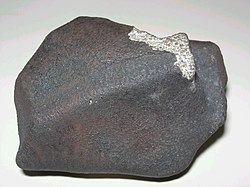|
Marília
Marília (Portuguese pronunciation: [maˈɾiʎɐ]) is a Brazilian municipality in the midwestern region of the state of São Paulo. Its distance from the state capital São Paulo is 443 km (275 mi) by highway, 529 km (329 mi) by railway and 376 km (234 mi) in a straight line. It is located at an altitude of 675 meters. The population is 240,590 (2020 est.) in an area of 1170 km2.[3] The municipality is emerging as an educational hub in São Paulo, with four public technical and higher education institutions (Unesp, Famema, Univesp and Fatec) and private institutions such as Unimar, Faef, Univem and Anhanguera. In 2017, 74 undergraduate courses were offered, with administration and pedagogy being the most offered. Marília has an average of one university student for every 18 inhabitants. The municipality also has the rural scientific research unit Agência Paulista de Tecnologia dos Agronegócios/APTA Regional de Marília).[4] History  In 1923, Antônio Pereira da Silva and his son José Pereira da Silva were the pioneers of the region, cleared land next to Feio and Peixe rivers. This land was named Alto Cafezal, or "High Coffee Plantation". A city of Araraquara region deputy at the time, Bento de Abreu Sampaio Vidal held in 1926 a parcel of their assets. In 1927, Colonel José Brás or Jose' da Silva Nogueira whose family origin in Itapetininga, arrived in Marilia. His family held 40% of the farm land named Bonfim, and the process of urbanization began with the allotment of this farm. Companhia Paulista Railway had been advancing its tracks from São Paulo to get to the town of Lácio, and in accordance with its plan, the roads that were being opened at the branch were named in alphabetical order. The next branch should have its name beginning with the letter "M." "Maratona", "Mogúncio" and "Macau" were suggested, but Vidal was not satisfied with them. So, in one of his trips to Europe by ship, as he read Tomás Antônio Gonzaga's Marília de Dirceu, he chose the name Marília from the poetry book. The city of Marília was created with this name by State Law No. 2161 on December 22, 1926, but remained as a borough of Cafelândia. In 1928, Marília was raised to the status of municipality by State Law No. 2320 of December 24. Its anniversary is celebrated on April 4, 1929. At first, the economy of Marília was based on the cultivation of coffee, being replaced by cotton. The financial success originated from this latter crop led to the installation of the first two industries in the city (two cottonseed oil) in the mid-1930s. With the expansion of the industrialization in São Paulo state, rail and highways were also built, thereby linking Marilia to various regions of the state of São Paulo and northern Paraná. In the 1940s the city established itself as a development of the West Paulista, when there was a large and growing urban population. In the 1970s, there was a new industrial cycle in the city with the installation of new industries, specially food processing and welding. With the subsequent installation of several university courses, Marília attracted more people to the region, which accelerated the development of the city as a commercial & industrial hub. Marília today has approximately 50 food industries in the area and it is known as the "National Capital of Food Processing."[citation needed] DemographyData of Census of 2000: Total population: Metro: 189,719 Rural: 7623 Men: 96,502 Women: 100,840 Population density (inhabitants / km ²): 186.42 (2007) Infant mortality up to 1 year (per thousand): 15.57 Life expectancy (years): 74.37 Total Fertility rate: 2.21 Literacy rate: 95.35% Human Development Index (HDI): 0.821 HDI-R Income: 0.885 HDI-L Longevity: 0.822 HDI-E Education: 0.962 Government The current mayor is Vinícius Camarinha - PSDB elected on 2025, whose mandate is valid until 2028. The government receives little state funding due to high tax returns from the local tax income. EducationThe city has several courses distributed in their colleges and universities. There are three universities: two private (Unimar and UNIVEM) and one public (UNESP) and three colleges, among them the school of medicine (Faculdade de Medicina de Marília).[citation needed] Transport Marilia has one airport for regional and domestic flights named Frank Miloye Milenkowichi Airport. The city is crossed by 3 highways: the SP-294, the SP-333 and Rodovia Transbrasiliana (Transbrazilian Highway). As most cities in the region, Marilia no longer has passenger railway service. One of Brazil's largest airlines, TAM, got its start as Táxi Aéreo Marília here in 1961.[citation needed] MediaIn telecommunications, the city was served by Companhia Telefônica Brasileira until 1973, when it began to be served by Telecomunicações de São Paulo.[5] In July 1998, this company was acquired by Telefónica, which adopted the Vivo brand in 2012.[6] The company is currently an operator of cell phones, fixed lines, internet (fiber optics/4G) and television (satellite and cable).[6] Religion Christianity is present in the city as follows: Catholic ChurchThe Catholic church in the municipality is part of the Roman Catholic Diocese of Marília.[7] Protestant ChurchThe most diverse evangelical beliefs are present in the city, mainly Pentecostal, including the Assemblies of God in Brazil (the largest evangelical church in the country),[8][9] Christian Congregation in Brazil,[10] among others. These denominations are growing more and more throughout Brazil. Interesting facts
Twin towns and sister citiesMarília currently has three sister cities:[11][12]
Notable people
Climate
References
Wikimedia Commons has media related to Marília. |
||||||||||||||||||||||||||||||||||||||||||||||||||||||||||||||||||||||||||||||||||||||||||||||||||||||||||||||||||||||||||||||||||||||||||||||||||











